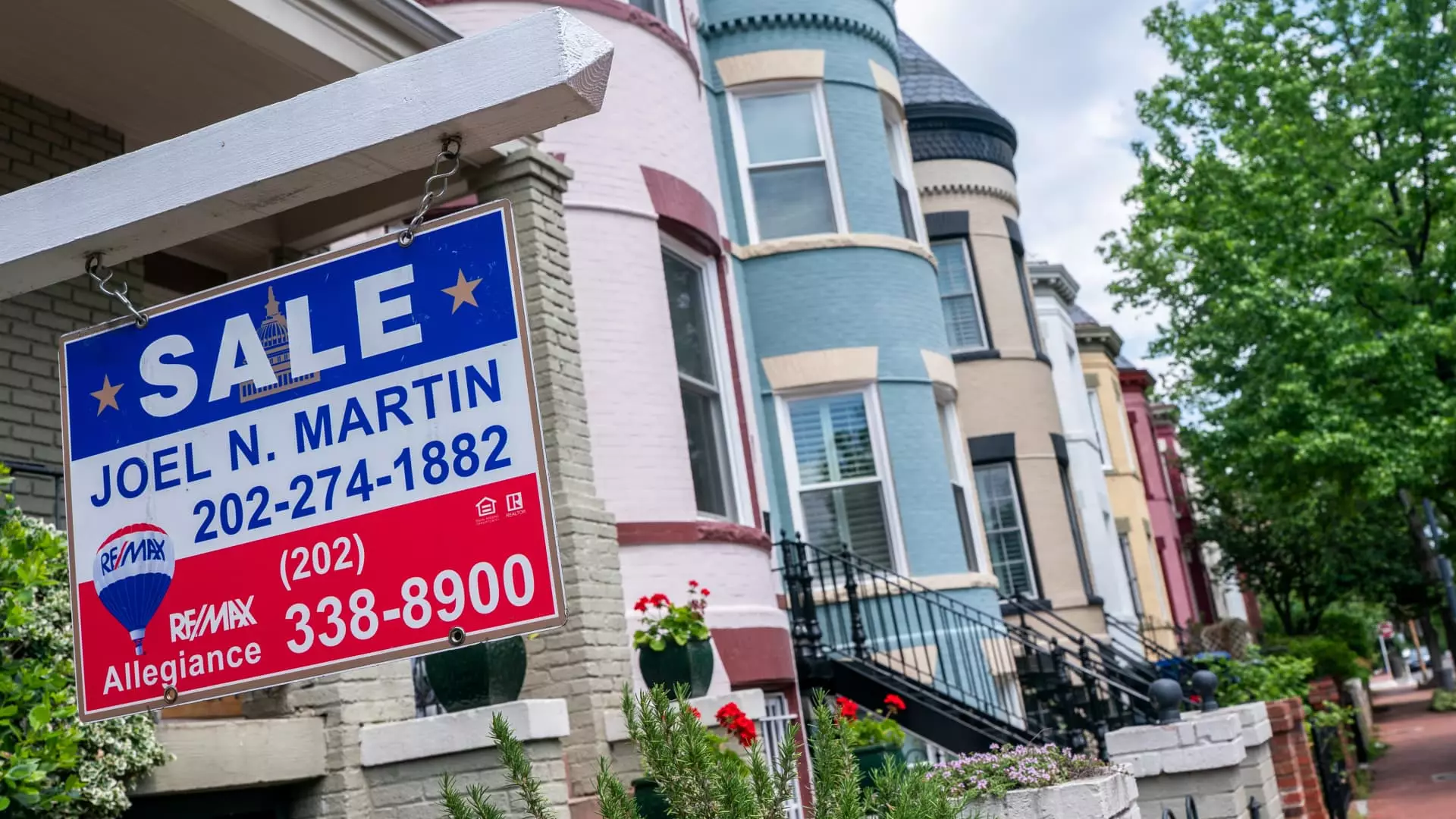As we step into the depths of spring, the housing market has found itself entrapped in a convoluted web of high interest rates and waning consumer confidence. April’s statistics revealed a disturbing trend: the sale of previously owned homes fell by 0.5% from March, reaching a seasonally adjusted annualized rate of just four million units. Such figures place us at the slowest pace for the month of April since the dire economic throes of 2009. Yesterday’s promising outlook has turned into today’s dismal reality, leaving potential homeowners and sellers in a state of uncertainty.
The National Association of Realtors (NAR) further complicates this landscape by revealing that home sales are down 2% compared to the same period last year; predictions had indicated a positive growth of 2.7%. The discrepancy arises from the reality that contracts signed in the preceding months reflected a false sense of stability, just before mortgage rates escalated in April. Lawrence Yun, chief economist at NAR, encapsulates the anomaly with precise clarity: we’ve observed a persistent performance at merely 75% of pre-pandemic sales activity, despite the addition of seven million jobs to the economy. It seems we are caught in an unending cycle where demand exists but refuses to manifest itself in tangible sales figures.
Inventory Surges Amid Stagnation
The market’s contradictions deepen with a significant 9% monthly increase in housing inventory, juxtaposed with a nearly 21% year-on-year leap. With 1.45 million homes on the market by the end of April, we now find ourselves with a 4.4-month supply—the highest in five years, yet still shy of the six-month benchmark that signals equilibrium. This bewildering reality tells us consumers are becoming more empowered, yet the reluctance to purchase persists, driven by the heavy weight of interest rates. The quest for a balanced market—where both buyers and sellers can coexist harmoniously—remains elusive.
Amidst this ongoing inventory surge, prices are finally beginning to cool, albeit at a depressed rate. The median price of an existing home in April hit $414,000, a meager increase of just 1.8% year-on-year. It may mark the highest April price on record, but it is also indicative of a slowdown compared to previous years, with annual price gains sinking further into subdued territory. In economically vibrant regions such as the South and West, prices observed declines—an unusual twist that speaks volumes about what lies beneath the surface.
Negotiation Power Shifts to Buyers
For the first time in years, the scales may be tipping slightly—or at the very least, inching—in favor of buyers. Yun posits that while we are still in a “mild seller’s market” at the macro level, the daunting inventory levels mean consumers finally have the upper hand in negotiations. Homes are lingering on the market for an average of 29 days; a stark contrast to the quicker sellouts witnessed during the pandemic boom.
In this climate, first-time buyers represented 34% of sales, unchanged compared to last year—a hopeful statistic signaling steady interest. However, rising cancellation rates—creeping up to 7% of sales—indicate that buyers are becoming discerning, perhaps even hesitant. The allure of homeownership is overshadowed by the fear of climbing interest rates and potential economic turbulence.
Interestingly, while the bulk of the market struggles, the luxury segment is showing signs of resilience, with sales of homes priced over $1 million experiencing a near 6% uptick from a year prior. This peculiar pattern suggests that wealthier buyers are still able to navigate the rigid landscape of high interest rates, while those at the lower end of the price spectrum are facing increasingly steep challenges. Yun’s insight on the dwindling appeal of high-end properties hints at a broader economic turbulence; it’s a reminder that what goes up can also come crashing down, reflecting underlying uncertainties impacting all segments of society.
The Bottom Line: A Market in Limbo
As the spring market reveals its multifaceted character, it underscores the intricate balance between demand, supply, and economic sentiment. With uncertainty overshadowing the housing landscape, we find ourselves at a critical juncture. Homeownership, once a cornerstone of the American dream, appears to be slipping further from reach for many, raising deep concerns about long-term stability in the market. This residential stalemate is more than just numbers; it’s a crucial representation of our collective anxieties and aspirations.

